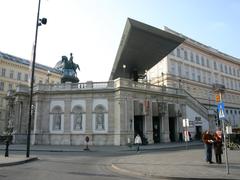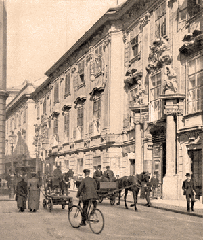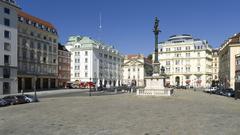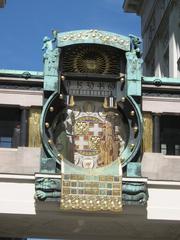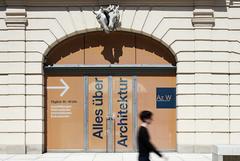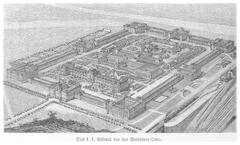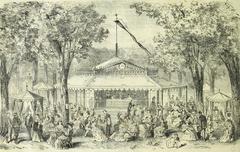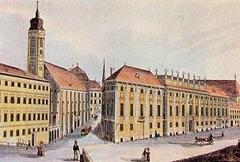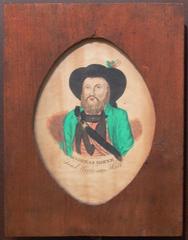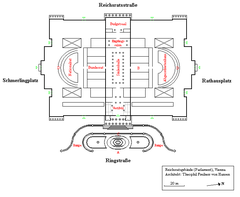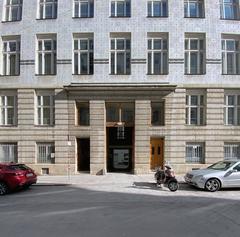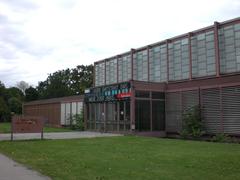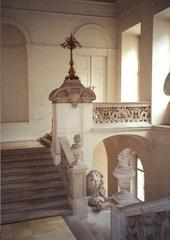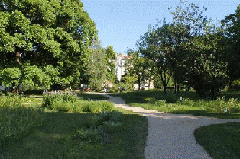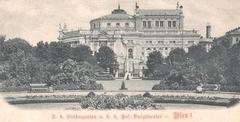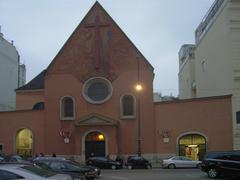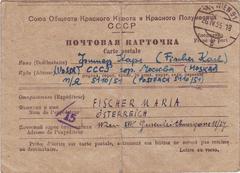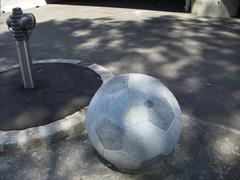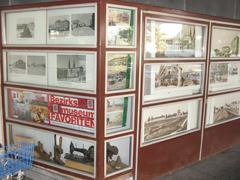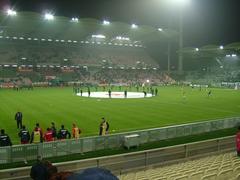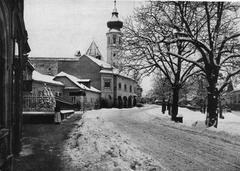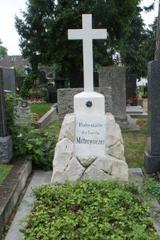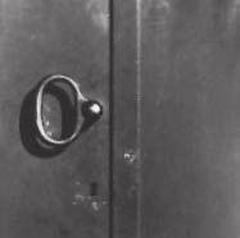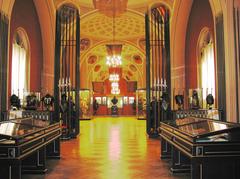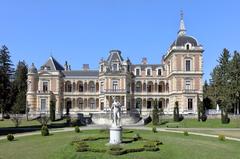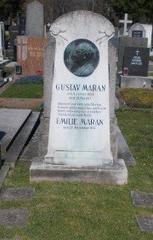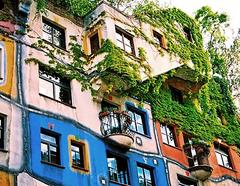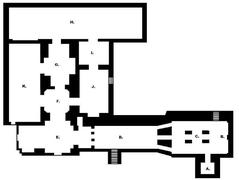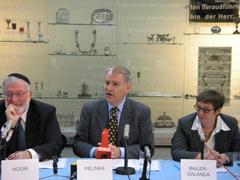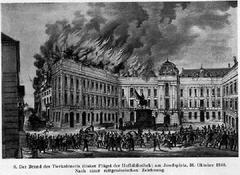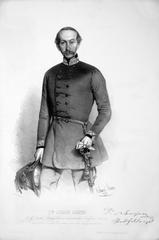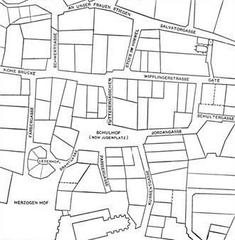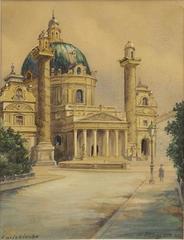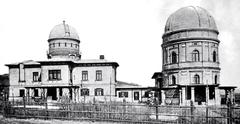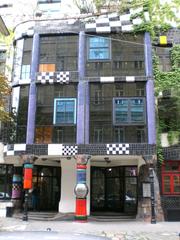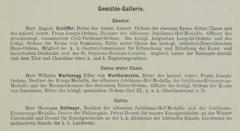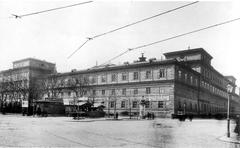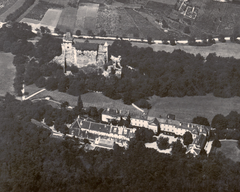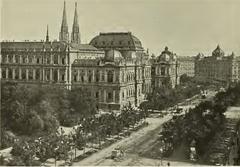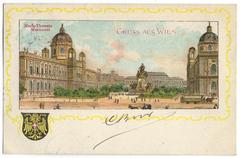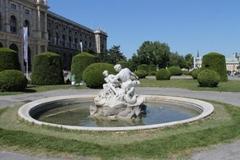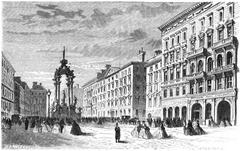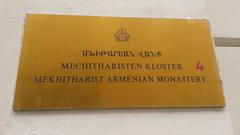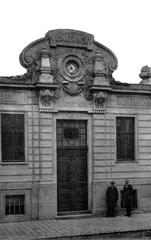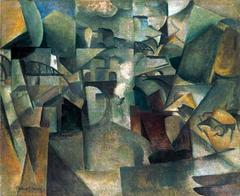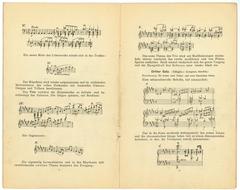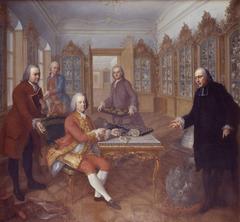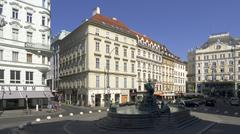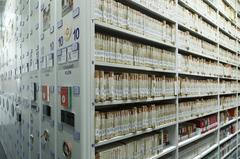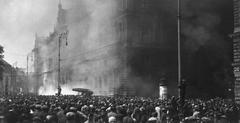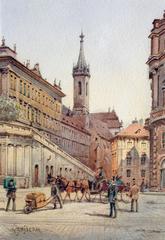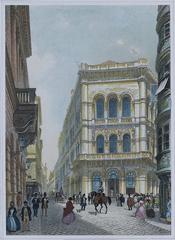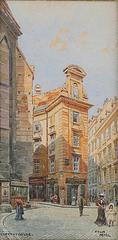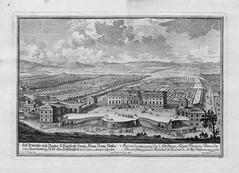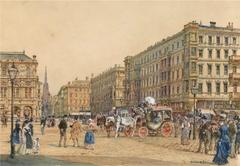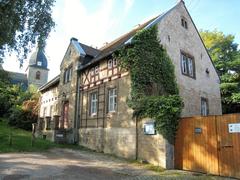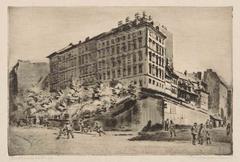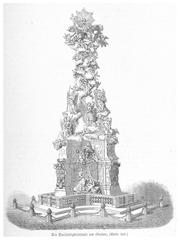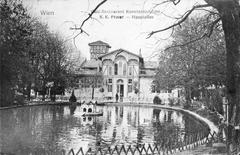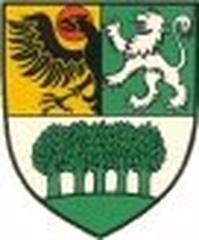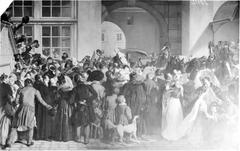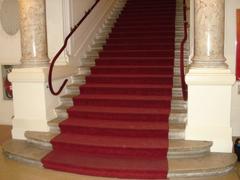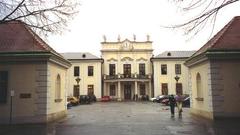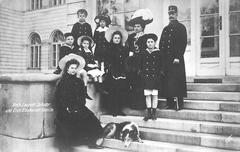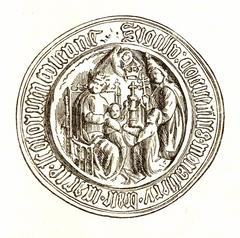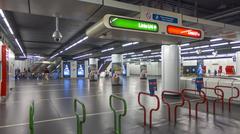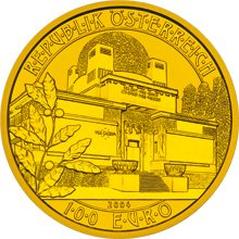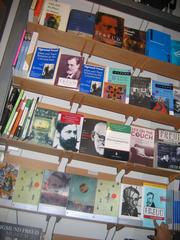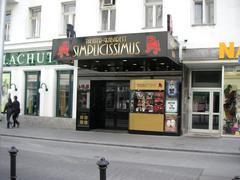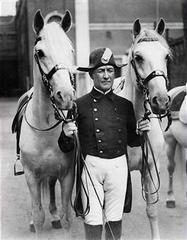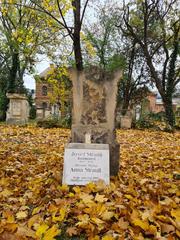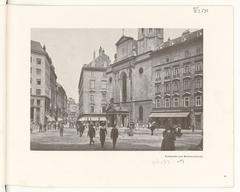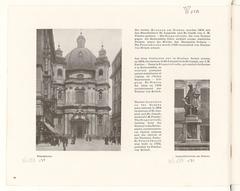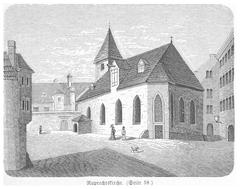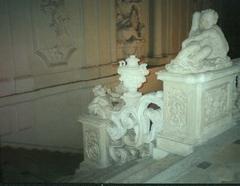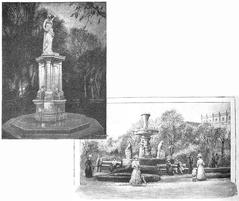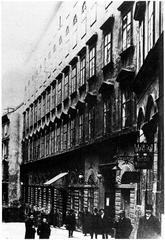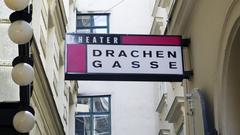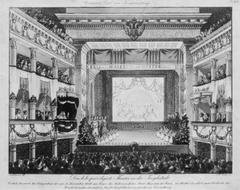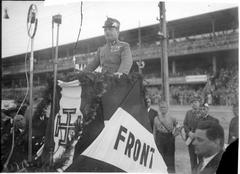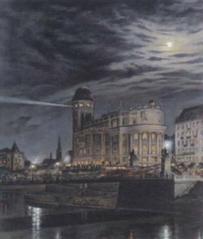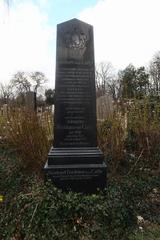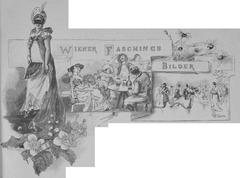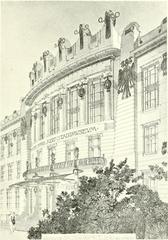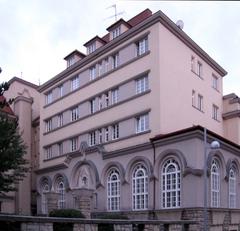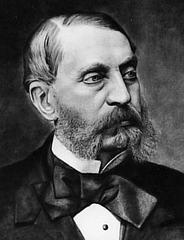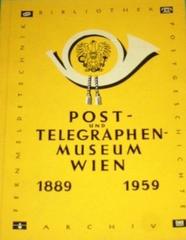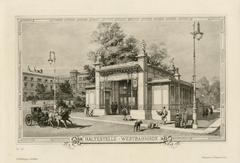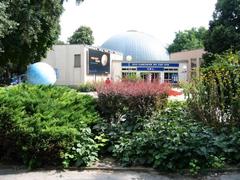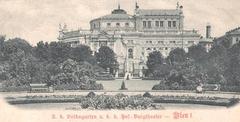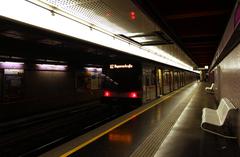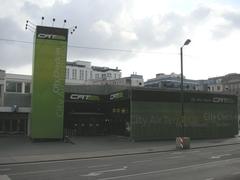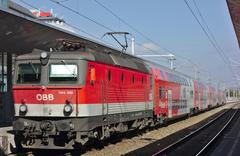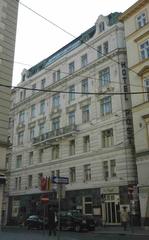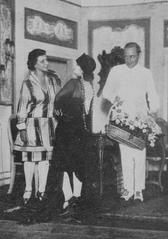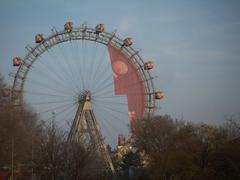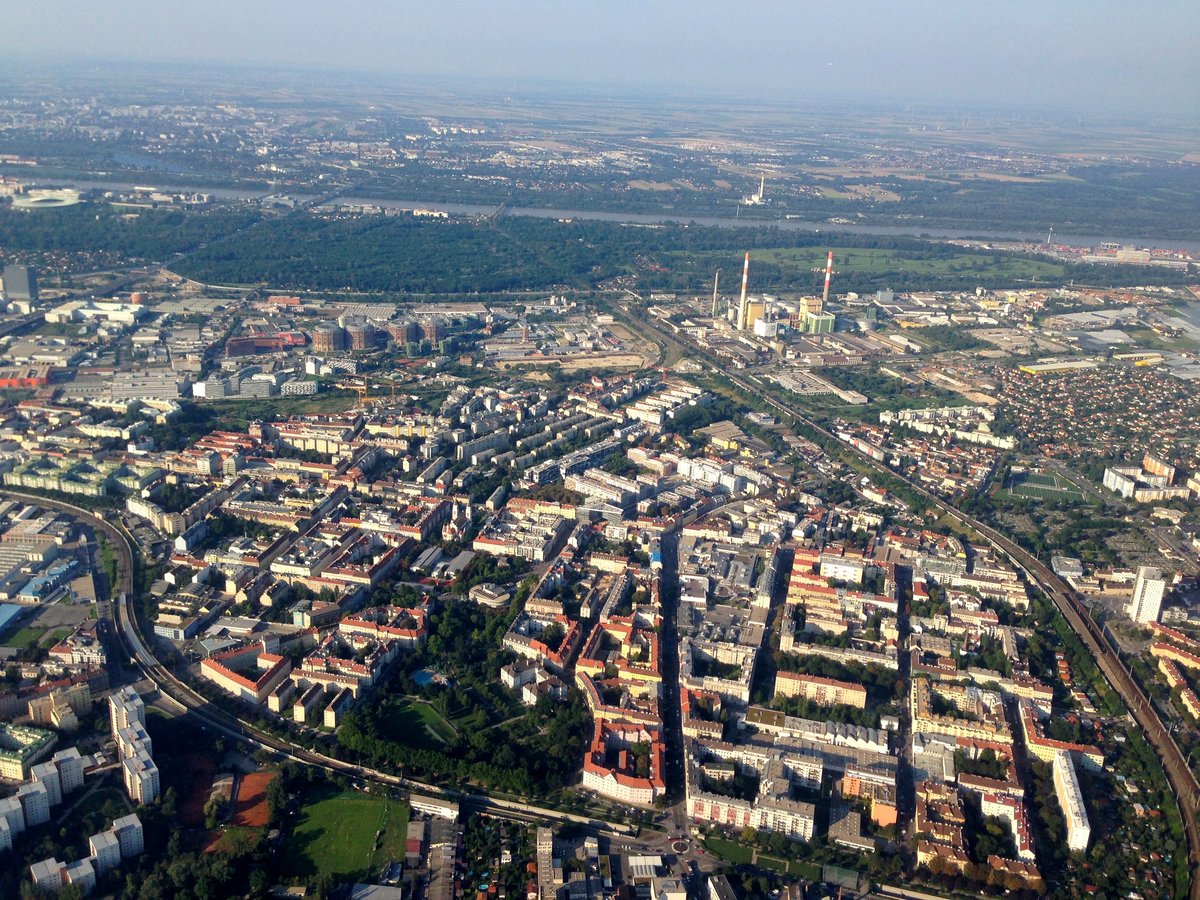
Gasometer C in Vienna: Visiting Hours, Tickets, and Historical Insights
Date: 17/07/2024
Introduction
Gasometer C, one of the four historic gasometers in Vienna, Austria, stands as a testament to the city’s rich industrial heritage and innovative spirit. Originally constructed between 1896 and 1899, the gasometers were designed by architect Franz von Neumann to store gas for the city’s street lighting, heating, and cooking needs (Vienna History). These impressive cylindrical structures, with their brick and steel construction, were among the largest gas storage facilities in Europe at the time. Over the years, Gasometer C and its counterparts played a vital role in Vienna’s urban development until their decommissioning in 1984 due to technological advancements and changes in energy consumption patterns (Gasometer Vienna).
Despite facing potential demolition, the historical and architectural significance of the gasometers led to a preservation and redevelopment project in the late 1990s. By 2001, Gasometer C was transformed into a modern, multifunctional space, featuring residential apartments, offices, and commercial areas, thanks to the innovative redesign by French architect Jean Nouvel. This blend of historical and contemporary architecture has made Gasometer C a unique landmark and a vibrant cultural hub in Vienna (Jean Nouvel).
Today, Gasometer C attracts both locals and tourists, offering a range of activities, from concerts and exhibitions to community events. Its convenient accessibility via public transport and its proximity to other attractions like the Prater amusement park and Belvedere Palace make it a must-visit destination in Vienna (Vienna Culture). This guide provides comprehensive information on Gasometer C’s visiting hours, ticket prices, travel tips, and more to help you make the most of your visit.
Table of Contents
- Introduction
- History of Gasometer C, Vienna, Austria
- Visitor Information for Gasometer C
- Conclusion
- FAQ
Exploring Gasometer C - History, Visiting Hours, and Tickets for Vienna’s Iconic Landmark
History of Gasometer C, Vienna, Austria
Early Conception and Construction
The Gasometers in Vienna, including Gasometer C, were constructed between 1896 and 1899. These structures were designed to store gas for the city, which was a crucial resource for lighting and heating during that period. The construction was overseen by the architect Franz von Neumann, who was known for his work on industrial buildings. The Gasometers were built using a combination of brick and steel, which was a common practice for industrial architecture at the time. The structures were cylindrical, with a height of approximately 70 meters and a diameter of 60 meters, making them some of the largest gas storage facilities in Europe (Vienna History).
Operational Years
The Gasometers were operational from 1899 until 1984. During this time, they played a vital role in the city’s infrastructure. The gas stored in these tanks was used for street lighting, heating, and cooking, significantly improving the quality of life for Vienna’s residents. The Gasometers were connected to the city’s gas network through a series of underground pipelines, which ensured a steady supply of gas to various parts of the city. The operational efficiency of these structures was a testament to the engineering prowess of the time (Gasometer Vienna).
Decline and Decommissioning
By the mid-20th century, advancements in technology and changes in energy consumption patterns led to a decline in the use of gas for lighting and heating. The introduction of electricity and other forms of energy made gas storage facilities like the Gasometers less critical. In 1984, the Gasometers were officially decommissioned. The structures remained unused for several years, and there were discussions about their demolition. However, due to their historical and architectural significance, the decision was made to preserve them (Vienna Gasometers).
Preservation and Redevelopment
In the late 1990s, a redevelopment project was initiated to repurpose the Gasometers. The project aimed to transform these industrial relics into modern, multifunctional spaces while preserving their historical essence. The redevelopment was completed in 2001, and the Gasometers were converted into residential apartments, offices, and commercial spaces. Gasometer C, in particular, was redesigned by the French architect Jean Nouvel. His design retained the original brick façade while incorporating modern elements, creating a unique blend of old and new architecture (Jean Nouvel).
Cultural Significance
The Gasometers, including Gasometer C, have become iconic landmarks in Vienna. They are a testament to the city’s industrial heritage and its ability to adapt and repurpose historical structures for modern use. The Gasometers are now home to a variety of cultural and social activities, including concerts, exhibitions, and community events. This transformation has made them a popular destination for both locals and tourists, contributing to the cultural vibrancy of the city (Vienna Culture).
Architectural Features
Gasometer C stands out for its architectural features. The original brick façade, with its intricate detailing and robust construction, has been preserved and integrated into the new design. The interior has been modernized to accommodate residential and commercial spaces, with a focus on functionality and aesthetics. The design by Jean Nouvel includes large glass windows and open spaces, which create a sense of light and airiness. The combination of historical and modern elements makes Gasometer C a unique architectural landmark (Architectural Digest).
Impact on Urban Development
The redevelopment of the Gasometers has had a significant impact on urban development in Vienna. It has revitalized the surrounding area, attracting new businesses and residents. The project has also set a precedent for the preservation and adaptive reuse of industrial heritage sites. The success of the Gasometer redevelopment has inspired similar projects in other cities, highlighting the potential of historical structures to contribute to contemporary urban life (Urban Development).
Visitor Information for Gasometer C
Visiting Hours and Ticket Prices
Gasometer C is open to visitors throughout the week. The visiting hours are typically from 10 AM to 6 PM, but it is advisable to check the official website for the most up-to-date information. Tickets can be purchased online or at the entrance. General admission tickets cost around €10 for adults, with discounts available for students, seniors, and groups (Gasometer Vienna).
Travel Tips and Accessibility
Gasometer C is easily accessible by public transport. The nearest metro station is Gasometer on the U3 line, just a short walk away. The site is also well-served by bus routes. For those driving, there is ample parking available nearby. The facility is wheelchair accessible, ensuring that all visitors can enjoy the experience.
Nearby Attractions
While visiting Gasometer C, take the opportunity to explore nearby attractions. The Prater, with its famous Ferris wheel, is just a short distance away. The Museum of Military History and the Belvedere Palace are also within easy reach, offering a broader historical and cultural experience.
Guided Tours and Photographic Spots
Guided tours of Gasometer C are available and offer a deeper insight into its history and architectural features. These tours can be booked in advance and are conducted in multiple languages. For photography enthusiasts, the combination of the original brick façade and modern architectural elements provides countless photo opportunities.
FAQ
What are the visiting hours for Gasometer C?
Gasometer C is generally open from 10 AM to 6 PM, but it is best to check the official website for the latest information.
How much are the tickets for Gasometer C?
General admission tickets cost around €10 for adults, with discounts for students, seniors, and groups.
How can I get to Gasometer C?
Gasometer C is accessible by the U3 metro line (Gasometer station) and several bus routes. There is also parking available for those driving.
Are there guided tours available?
Yes, guided tours are available and can be booked in advance. These tours are offered in multiple languages.
Is Gasometer C wheelchair accessible?
Yes, the facility is wheelchair accessible.
Conclusion
The history of Gasometer C is a fascinating journey from its conception as a gas storage facility to its transformation into a modern architectural landmark. The preservation and redevelopment of this structure highlight the importance of adaptive reuse in urban development. Gasometer C stands as a symbol of Vienna’s ability to honor its past while embracing the future, making it a significant cultural and historical site in the city.
Call to Action
Don’t miss the chance to explore this unique blend of history and modernity. Plan your visit to Gasometer C today, and stay updated by following us on social media and checking out our other related posts on Vienna’s historical sites.
References
- Vienna History, n.d., Vienna History
- Gasometer Vienna, n.d., Gasometer Vienna
- Jean Nouvel, n.d., Jean Nouvel
- Vienna Culture, n.d., Vienna Culture
- Vienna Gasometers, n.d., Vienna Gasometers
- Vienna Tourist Board, n.d., Vienna Tourist Board


